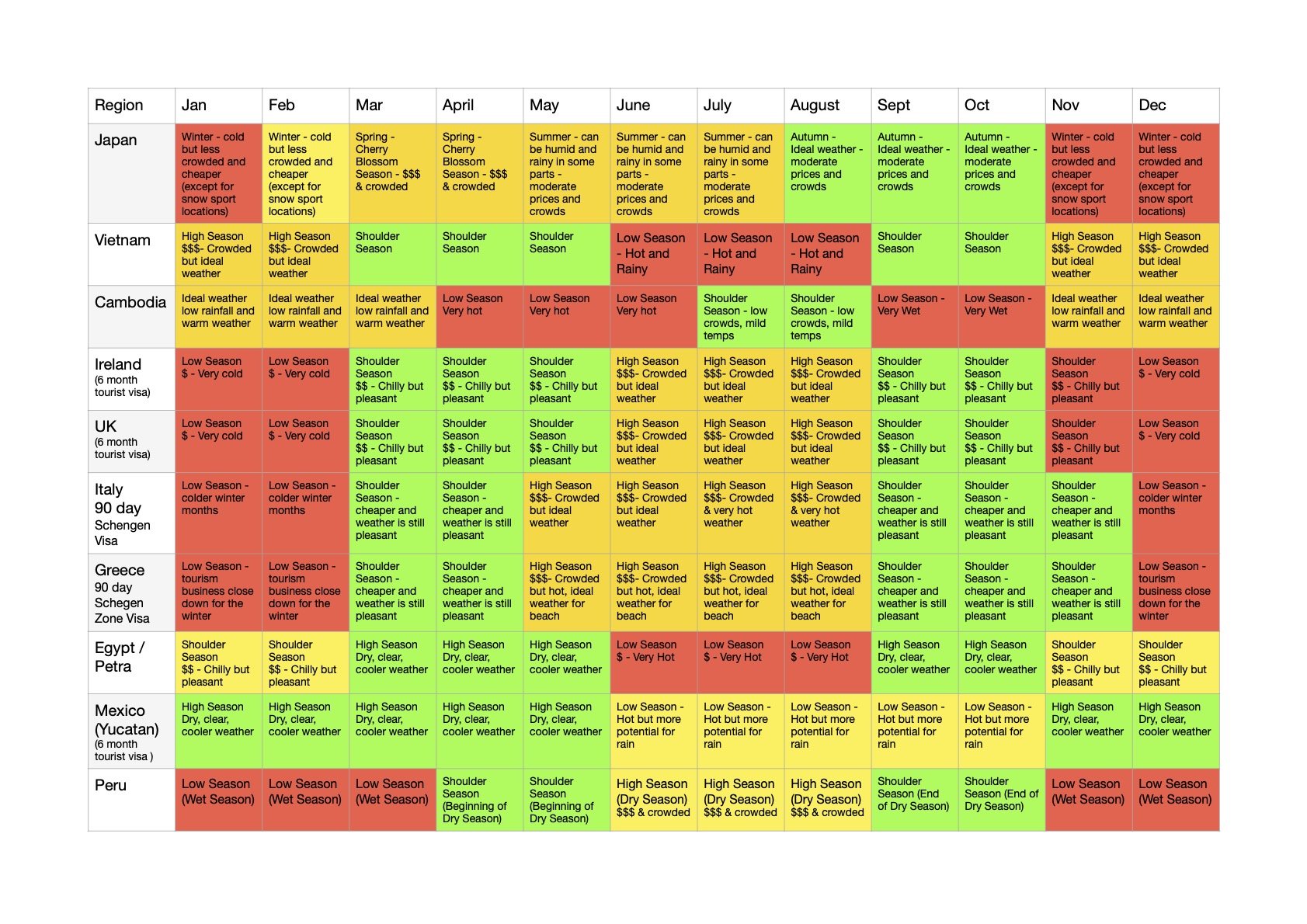Embarking on our family gap year is quite literally a dream come true. But it has come with a lot of planning and research. I happen to love these two things and I’ve been thrilled by how much Michael has got involved in the planning process, it’s been a really fun, collaborative process.
The thought of deciding where to go, what to see and how to connect the dots would no doubt seems like a daunting task so in this post I’ll break down some of our decision making process and a few things to consider, if you were to plan your own extended family adventure.
Begin your global journey by envisioning the countries, regions, or landscapes that resonate with your travel dreams. Whether it's the allure of sun-soaked beaches, high altitude alpine adventures or the exploration of diverse cultures and languages, create a comprehensive bucket list that reflects your passions and interests.
We also factored in specific places and experiences that our daughters have a strong interest in, for example one has a fascination with Big Ben in London and bullet trains in Japan, while another daughter loves animals and has along list of animals she would like to see.
Once your dream destinations and experiences are on paper, the next step is to dive into practical considerations. Investigate the duration of tourist visas for each country on your list. Understand the exchange rates to gauge the purchasing power of your Australian Dollar or your base currency. Factor in the climate; figure out when the weather is most favourable and if any particular season aligns with your preferences or activities.
Furthermore, it’s important to consider the concept of peak season, shoulder season and off-seasons. While peak times may offer ideal weather, they often come with inflated prices and bustling crowds. In contrast, off-seasons may be more budget-friendly but could limit certain activities and tours.
Our strategy involves a shoulder season visit to Greece in October, striking a balance between cost savings and the continued operation of transport around the islands . Conversely, for Ireland, we've opted for the peak summer months, accepting the higher costs for the warmest weather.
With these key considerations in mind, dive into researching the costs associated with each destination. This step will help in crafting a realistic budget, aligning with your travel duration in each location. Also, this knowledge becomes the foundation for mapping out an efficient route, both in terms of international flights and inner-country travel.
I will go into some aspects in more details in further posts, like planning flights, booking accommodation and creating country specific itineraries. However, below are a few handy websites I’ve used along to way to piece together the overall itinerary for our gap year.
Flight Connections
This websites allows you to see what direct flights fly in and out of any airport in the world. The free version has been fine for what I’ve needed so far.
https://www.flightconnections.com/
Numbeo
Numbeo is a good starting point to compare the costs of two countries, for example Australian vs Italy. This can give you an idea of how much to budget for each destination.
Best Time to Visit
This website is a very handy way to search the best time to visit a specific country or region or you can search the time of year and your desired holiday style. For example - a beach holiday in August
https://www.thebesttimetovisit.com/
Lonely Planet
I’ve been a huge fan of Lonely Planet since I first came across my Dad’s Lonely Planet guide to Nepal. Their website offers very easy to digest information on every country you could possibly image and I often used this when researching the travel seasons for each country we were interested in.
Passport Index
This website allows you to select your passport and then see the visa requirements of other countries around the world.
Below is a rough table I made to help visualise the best itinerary for the year. You can see I’ve made notes for each country and each month in that country, then I colour coded it; green was the optimal time to go, generally the shoulder seasons; yellow was the ok time to ok, generally the high seasons and red indicated the time period to avoid, generally when the weather was not ideal. I’m a very visual person and this really helped in mapping out our route, it was easy to create in word / google docs.
